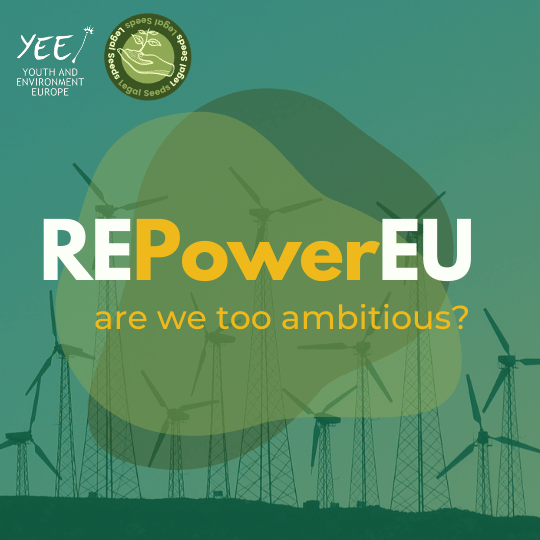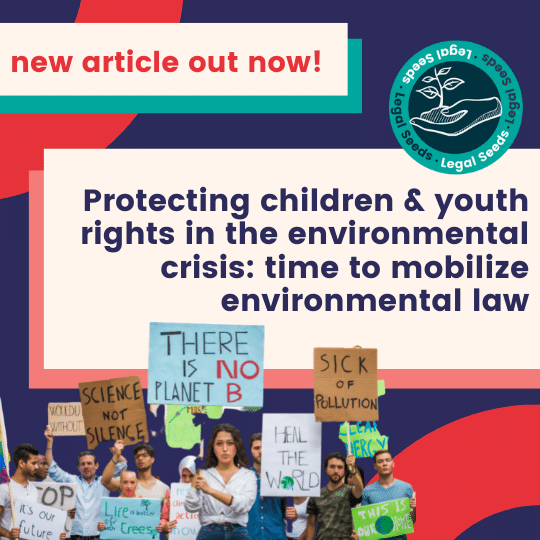
The Environmental Law Team of YEE actively participated in the 15th Task Force on Access to Justice in Geneva, sharing valuable insights.


Rivers – anywhere you are in Europe, there must be a river not far from you. Ancient Greeks would marvel at rivers like Gods. How have we now come to a point in which up to 60% of European water bodies (including rivers) are highly polluted?
The health of water bodies constitutes a major determinant for human food and water quality, which demonstrates how human health is inextricably tied to healthy water body habitats. Rivers, in particular, constitute mobile water bodies which cross vast swathes of Europe while exchanging water, materials, energy and nutrients with their surroundings. Therefore, even though they make up a small percentage of surface freshwater, they have a significant influence on European habitats and their conservation status.
Like other surface water bodies, rivers are affected by multiple sources. Point source pollution for example is any identifiable source of pollution, such as wastewater. Its disposal in rivers leads to a high concentration of toxic chemicals, such as cyanide, zinc, lead and copper. Then, diffuse source pollution results from the collective run-off of water used by human activities, particularly in agriculture. It increases the concentration of nitrogen and phosphate in water bodies, which are likely to trigger eutrophication, a situation which adversely threatens biodiversity due to an increased load of nutrients present in the water. Lastly, there are hydromorphological pressures, such as barriers, which may result in habitat alterations which have a series of cascading consequences ranging from higher water temperatures to reduced species’ migration.
Water pollution can have grave consequences for the environment. The safety of drinking water can be jeopardised, entire food chains can be disturbed and there is a likelihood of disease spread (e.g. typhoid, cholera, etc…).
The European Union, in response to the unfavourable status of water bodies, introduced Directive 2000/60/EC – the Water Framework Directive (WFD) – in 2000.
The purpose of the WFD is “to establish a framework for the protection of inland surface waters, transitional waters, coastal waters and groundwater” (Article 1). Through the Directive, the EU, therefore, wishes to promote sustainable water use, enhance the protection of aquatic ecosystems, and ensure the progressive reduction of pollution. Member states are required under Article 4 to issue River Basin Management Plans (RBMPs) every 6 years, detailing how they will achieve a good water status. A deadline for publishing RBMPs was originally set for 2015; nevertheless, Article 4(4) provided for the possible extension of the deadline to 2027, which includes two more cycles of RBMPs.
For surface waters – like rivers – good status is dependent on a good ecological and good chemical status. The WFD also specifies that when natural circumstances do not allow a good status to be reached (Article 4(4)), or if the restoration is unfeasible or disproportionately expensive (Article 4(6)), an exception can apply to achieve a good water status. Nevertheless, no deterioration of the status is legally acceptable.
As of 2023, most MS have had difficulty realising the ecological ambitions of the WFD. Furthermore, according to countries’ RBMPs covering the period up to 2015, good or better ecological status has been achieved for only around 40% of surface waters. The following section will examine the progress (or regress) of the WFD in more detail.
With only four years left to meet the – extended – WFD deadline, the good status targets seem unlikely to be achieved. A study by the Living Waters Europe Coalition revealed that 90% of river basins studied around the EU will fail to reach the criteria specified in the WFD by 2027. In the same vein, a news headline by WWF revealed that “Europe’s rivers [are] nowhere near healthy by [the] 2027 deadline”. It is also noteworthy that a great deal of the water bodies which presented a good water status in 2015, already had the status before the adoption of the WFD.
Moreover, in September 2021, at least nine MS had still not presented their draft plans for all river basins, and RBMPs studied by WWF and the Living Rivers Europe demonstrated that there has been insufficient funding by MS for the Directive’s implementation. Giakoumis and Voulvoulis (2018) reveal that although the plan is fit for purpose, socioeconomic contexts and the MS’ institutional settings have restricted the opportunities the WFD has brought to the table. This means that these countries will fail to fulfil legally binding requirements.

The Environmental Law Team of YEE actively participated in the 15th Task Force on Access to Justice in Geneva, sharing valuable insights.

The discussion within the EU around the Fit For 55 legislative package is at the core of the EU’s current action on

If exiting from the Russian fossil fuels, gas and coal import is a necessity, should it be then done at all costs?

The importance of protecting children and youth rights as rights-holders and stakeholders in the context of environmental-related disasters.
 YEE aims to unite environmental youth non-profit organisations in Europe in order to enhance international cooperation, increase knowledge about the climate crisis, raise awareness of environmental problems and to strengthen participation of youth in environmental decision-making.
YEE aims to unite environmental youth non-profit organisations in Europe in order to enhance international cooperation, increase knowledge about the climate crisis, raise awareness of environmental problems and to strengthen participation of youth in environmental decision-making.
Vinohradská 2165/48
120 00 Praha 2 – Vinohrady
Czech Republic
E-mail: yee@yeenet.eu
Supported by the Council of Europe through the European Youth Foundation.
Co-funded by the European Union. Views and opinions expressed are however those of the author(s) only and do not necessarily reflect those of the European Union or the European Education and Culture Executive Agency (EACEA). Neither the European Union nor EACEA can be held responsible for them.

 YEE’s Summer Camp on energy policy and environmental law
YEE’s Summer Camp on energy policy and environmental law 
